Review by Pete Vack
The Buzz
Jacques Saoutchik 1948 Talbot-Lago T-26 Grand Sport Chassis 110101 is the latest in a series of books on the work of Jacques and Pierre Saoutchik by the team of Peter M. Larsen and Ben Erickson, and is a single-serial-number-treatise of considerable interest and beauty.
Previous books on the subject are the massive, comprehensive three-volume Jacques Saoutchik, Maître Carrossier, published in 2014, now out of print and highly prized; an addendum to the above featuring the cars found in the Baillon collection, and earlier, in 2012, the Talbot-Lago Grand Sport, which included the Saoutchik-bodied Grand Sports, also out of print.
As with the others, it is a limited edition with only 600 printed. And as before, we strongly suggest that if you want a copy, do so now. Give yourself a Christmas present you’ll not forget.
The Book
In 2017, the new custodian of the GS Talbot-Lago 110101, Robert Kudela, decided that it should be restored once again, and informed Peter Larsen and Ben Erickson about the project. The owner also brought in photographers to document the process as well as the final result. The combination of these fortuitous circumstances made possible a comprehensive monograph of one of the most outstanding creations of Jacques and Pierre Saoutchik and Anthony Lago.
Using the same format as the previous books, Grand Sport Chassis 110101 consists of some material taken from the omnibus work, to good effect, reviewing the development of the Talbot Lago Grand Sports, a mini history of Saoutchik, the post war Salon de l’Automobile in Paris, a complete history of chassis 110101, and the restoration of the subject vehicle.
ISBN: 978-1-956309-19-5
Release Date: August 2024
Page Size: 219 x 304mm, portrait
328 pages, 264 illustrations/photographs
Hard cover with dust jacket in slipcase
$225
https://www.daltonwatson.com/Saoutchik-110101-p/saoutchik-110101.htm
The Bolide
Talbot-Lago Grand Sport 110101 was the unabashed star of the 1948 Paris Show and placed next to the entrance where everyone saw it. It was perhaps the poster boy of the postwar French coachbuilt sports car. It spent most of its life in the U.S., most recently owned by Peter Mullin, who displayed the car many times in a blue on blue color scheme.
But for the 1948 Paris show, it was decked out in chocolate brown and green. One might understand why the first restoration ignored the color swatches no doubt found beneath the paint layers and chose a duo blue which seemed much more agreeable to the eyes. And after all, they were footing the bill and were free to paint it in any color they wished. Bravely, Kudera went for the original colors. And like the lines of the Talbot-Lago, one gets accustomed to the hues.
The Beauty
Perhaps this volume speaks more about the beauty of the car, and what beauty is. Photographer Petr Michálek captures the lines of the car in a studio, outside and on the road, and in a series of ‘interludes’ consisting of photo galleries each introduced with a quotation on beauty. It is effective and works well, for between the poetic quotes (a few of which we excerpt here) and stunning photography, the car grows on one, even if initial impact is negative.
“There is no excellent beauty that hath not some strangeness in the proportion.” Sir Francis Bacon
It may be an affront to be faced with so many color photos of the same car. There are roughly 70 images by Petr Michálek alone all taking up two pages, comprising the 6 interludes. Overkill to be sure, but the car itself is overkill as well. And amazingly, there are so many angles, so many variations, so many curves to shoot one never tires of looking at the same car.
“I have decided that when I am a star, I will be every inch and every moment a star.” Gloria Swanson
The car, the photography, keeps on giving. The details, the engine, the interior, all impress. Then we think, “Are we really supposed to like this car?” particularly those of us who found little to like in the many excesses of GM and Chrysler. How can we be critical of one and love the other? Because it is French? Yet we are not the only ones in anguish. After the war, Jacques’s son Pierre was responsible for most of the designs. And they were different. According to Peter Larsen, “Pierre inaugurated a second ‘golden age’ for Saoutchik…his highly artistic designs continually violated preconceived notions of how an automobile could look, provoked strong reactions and divided both spectators and customers into those who were overawed and those who saw the cars as decadent and repulsive.” And there was more; Pierre was highly influenced by GM’s Harley Earl.
The Buick
Larsen compares 110101, Saoutchik design 2509, to the 1942 Buick, with some justification.
“Design 2509 was for a low semi-pontoon fastback coupe that was clearly inspired by the Buick Roadmaster and Super Sedanette fastbacks which had been put on the market in America by General Motors in 1942. On the Sedanette, Buick offered new wider and lower bodies with so called ‘Airfoil’ front fenders that flowed across the door skin and into the upsweep of the rear fenders.”
The connection between GM Styling chief Harley Earl and Saoutchik (both father and son) is always a fascinating subject. Earl went to the Paris Auto Show almost every year, and no doubt there was a lot of cross influence. But we wonder if the connection may be a bit tenuous. Every time we gaze lovingly at a 1942 Buick we see fat. Every time we look alarmingly at the TS 110101 we see lean. One is fit and one is fat. The Saoutchik Talbot is a chromed cat about to leap. And maybe that’s why we love 110101.
The Bucks
Back to that Paris salon. The car was strategically placed at the entrance where everyone simply had to see as they entered. And everyone had opinions. Everyone looked, saw, and wondered. There was a lot to wonder about.
The quoted price for a Saoutchik-bodied Talbot-Lago Grand Sport was 4,260 pounds, roughly $11,900 not counting shipping or taxes.
The Cadillacs and Buicks simply did it better; better ride, better performance, better reliability. Even if they were fat. The cost for a 1948 Cadillac coupe was $2900. Everything for Saoutchik was downhill from there. 110101 was indeed the apogee of the French coachbuilder.
Whatever the bucks for this book, buy it.
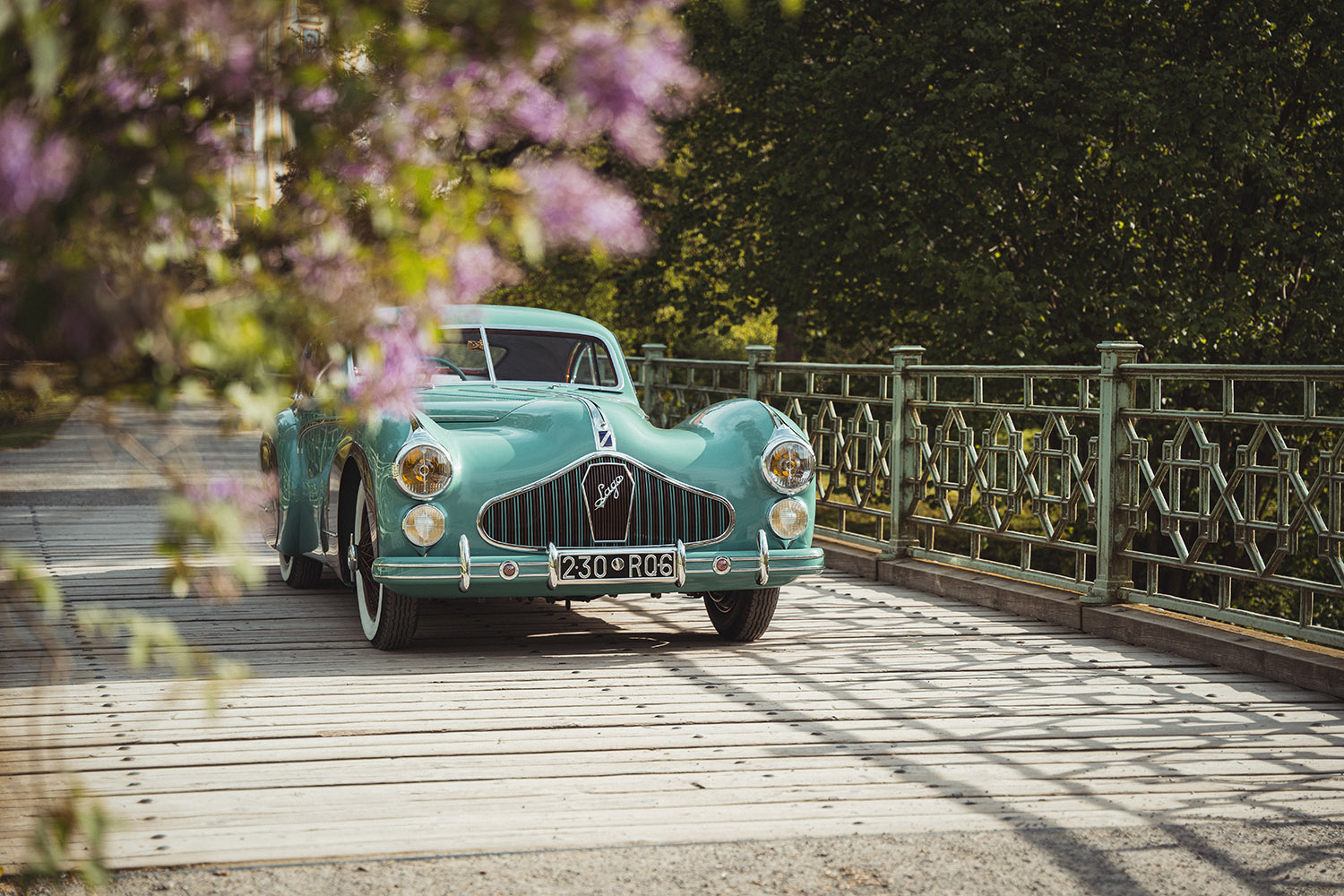
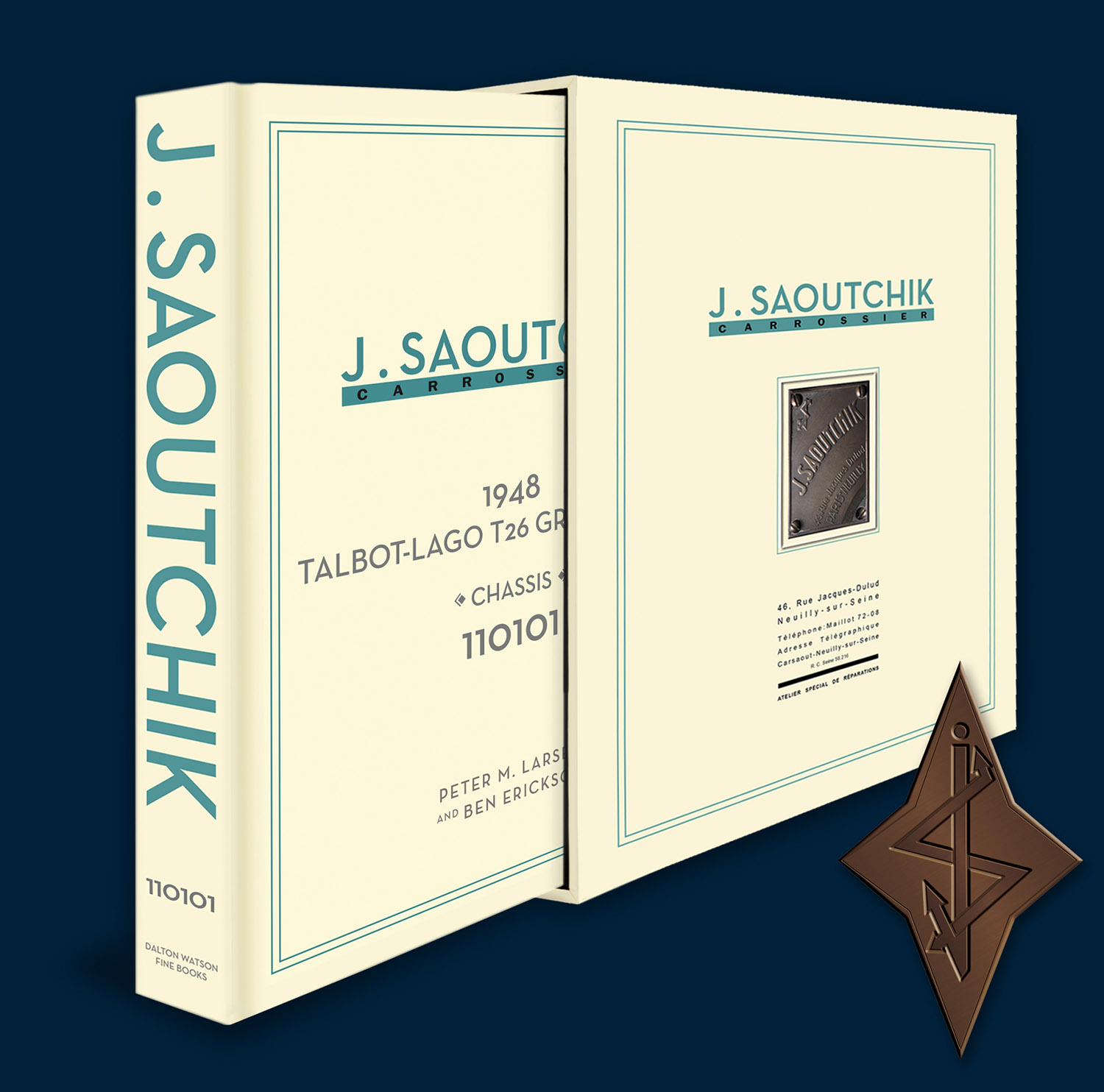

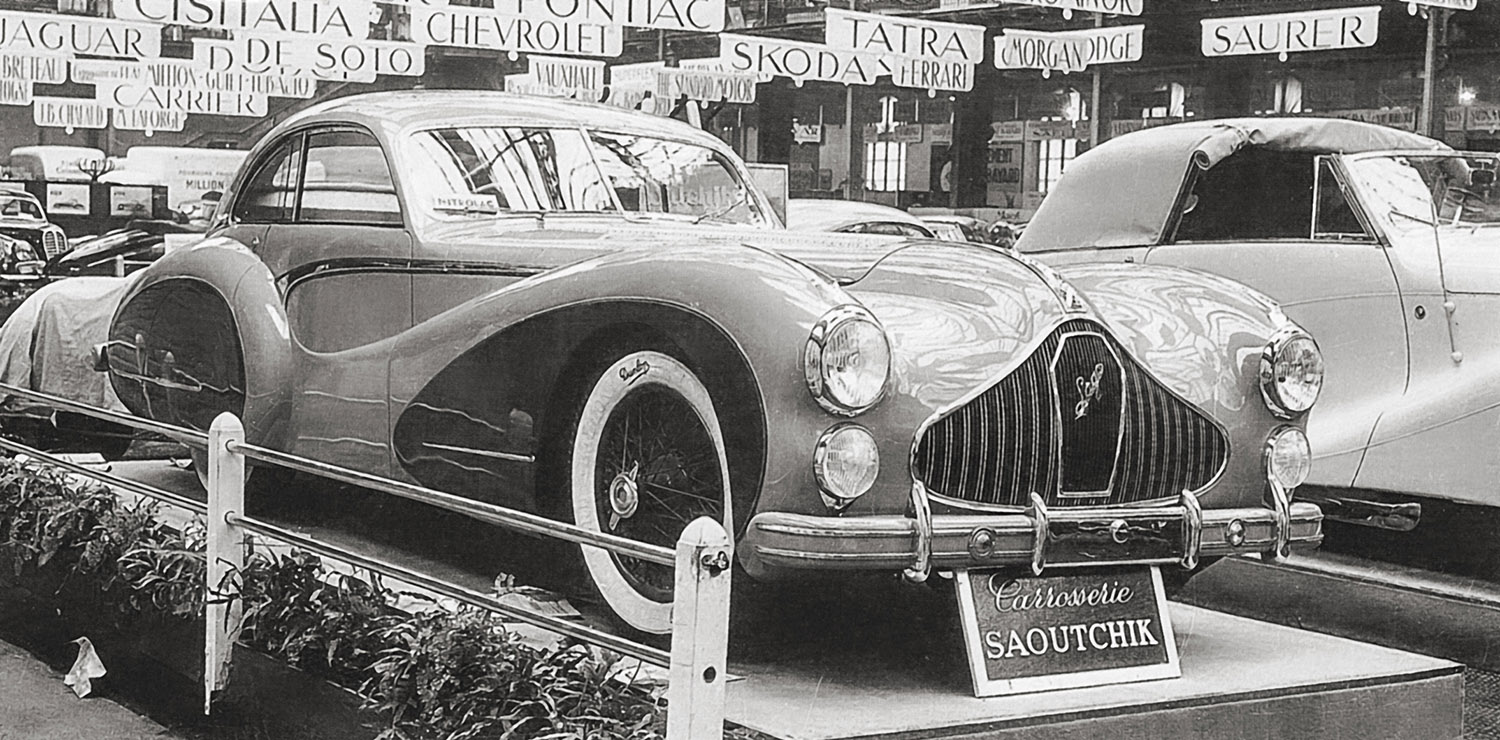
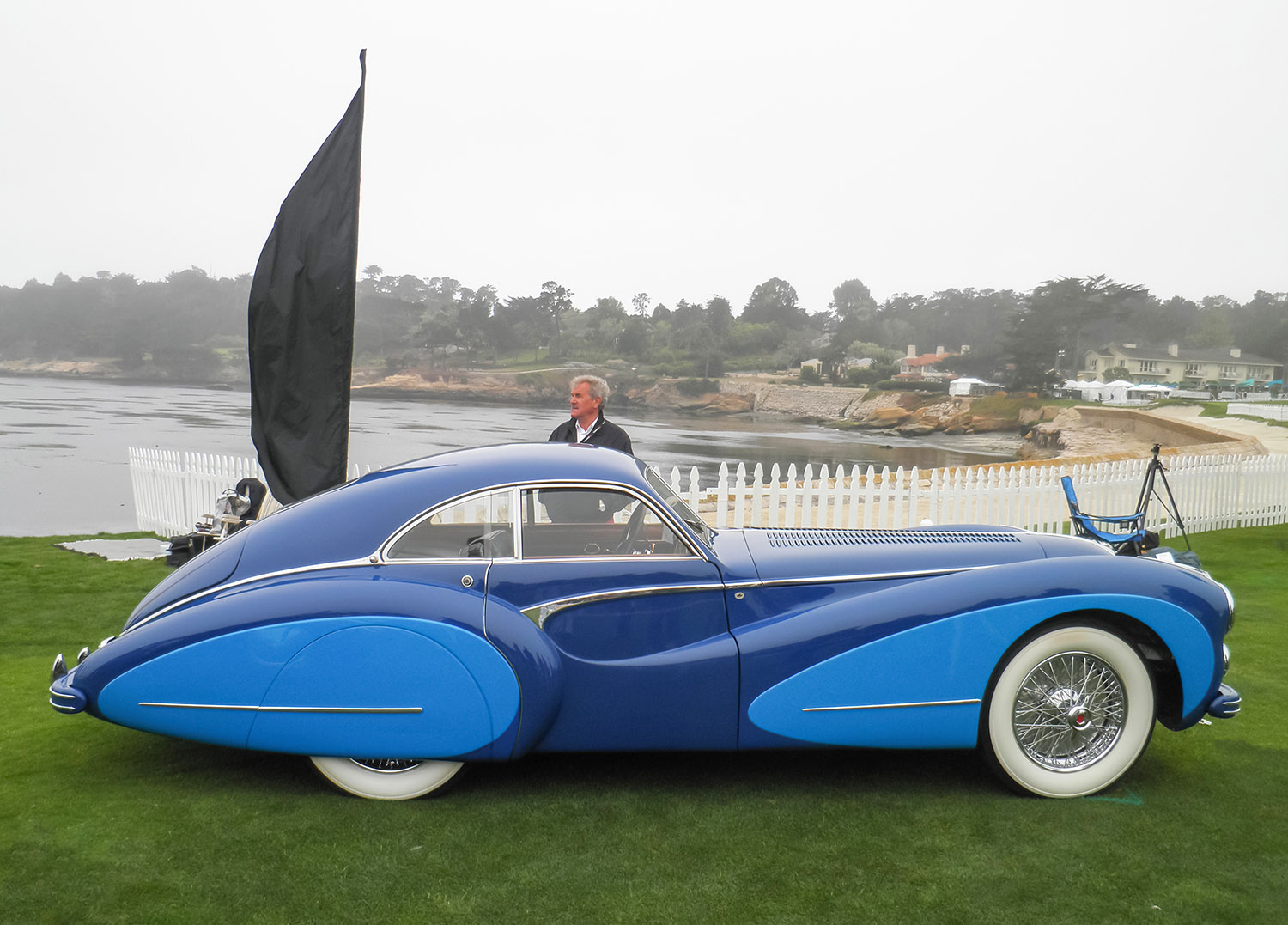



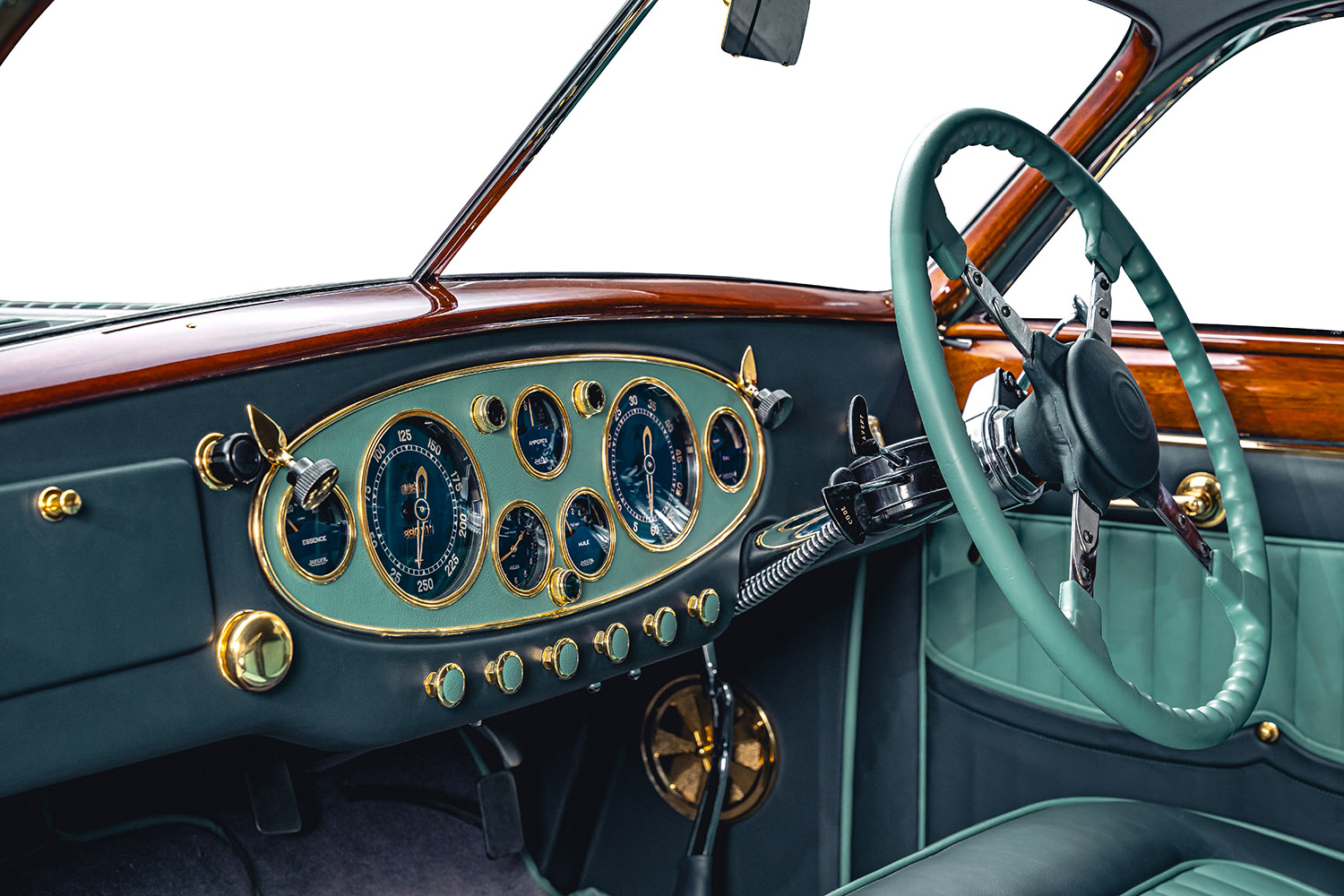
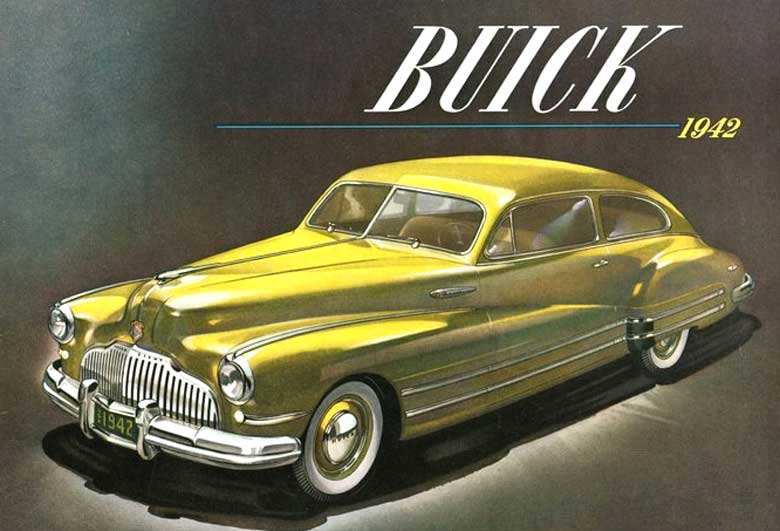


This car got a lot right. By extending to the very back of the car, the roofline is flatter, more racy, than the shorter roofs on nearly all prewar cars. The side window shape is gorgeous, the rear fender profile dramatic. But then they messed it up with those bumpers, all that decorative clutter. And yes, the Buick Sedanette was very attractive and influential. I cannibalized the roof from one for the body of my 1948 Alfa (same year as the T-L). The rear half of my car is very similar to 110101.
It must have been very hard to see over that long hood to gage turning distances.